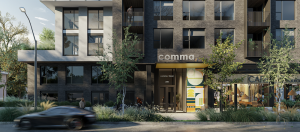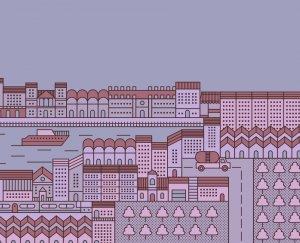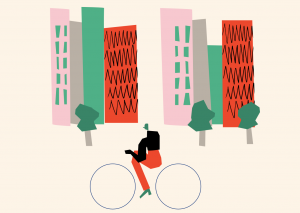Imagine if urban planning utilized a more thoughtful, neighbourhood-specific approach, one that combined the essence and soul of a community with easy access to essential services.
For Rize, a vibrant neighbourhood has three essential elements: distinct architecture resulting in a strong sense of place, functional places for life, work and play, and a community committed to supporting each other—a place where daily life is balanced with urban living.

In a 2020 TED Talk, Professor Carlos Moreno from Sorbonne University in Paris outlined the idea of the 15-minute city, which boils down to “giving area inhabitants access to the essential services they need to live, learn, and thrive within their immediate vicinity”
This concept intrigues us for several reasons, namely its approach to creating a better sense of place—one that keeps the culture of a neighbourhood alive while also being a more thoughtful and sustainable form of urban development.
Let’s look at how the 15-minute city framework can elevate daily life for a neighbourhood and its residents.
A Popular Concept with Roots in the 1930s

The 15-minute city was coined by Professor Moreno in 2016 and has already been implemented in cities around the world including Paris, Milan, Portland, and Buenos Aires. Urban planners and public health proponents have favoured the 15-minute city for years.
Fransisco Uribe, assistant professor with the School of Architecture, Planning and Landscape at the University of Calgary, says the concept has roots dating back decades.
“It can be traced back to the 1930s with the idea of the neighbourhood unit concept, where we have at the centre of the neighbourhood—within a radius of walkability—the school and the main services citizens require in their daily lives,” says Uribe.
A More Healthy and Sustainable Lifestyle

One of the primary goals of the 15-minute city is to improve sustainability and promote a healthier lifestyle. The idea is that having things like grocery stores, cafes, gyms, and more roughly within a 15-minute distance will reduce vehicle dependency and therefore, reduce carbon emissions.
What makes Moreno’s 15-minute city framework so interesting is that it can be adapted to fit a variety of local cultures and communities.
Paris, for example, has banned high-polluting vehicles from entering the city at certain times, letting pedestrians freely use the city’s many quays for bike rides and walks along the Seine. More green spaces also ease the urban heat-island effect, reduce flood risk, and improve biodiversity.
Similarly, Danish architect Henning Larson helped transform an old airfield in Toronto into a ‘green-minded, human-scale and people-first community’, inspired by the 15-minute city.
He writes: “Future neighbourhoods will make space for both local intimacy and urban vibrancy, where the magic of community life spills into and enriches public spaces. Inspired by the ’15-Minute City’ concept, everything residents and workers need will be easily accessible with a short walk, roll, bike, or public transit ride.”
The Value of Thoughtful Urban Planning

“Future neighbourhoods will make space for both local intimacy and urban vibrancy, where the magic of community life spills into and enriches public spaces.
In one of our recent Thinking pieces, we explored the intersection between urban living and convenience; It’s great to live in a vibrant neighbourhood with easy access to daily necessities, but what if those necessities were thoughtfully integrated into where you live?
From an urban planning perspective, we’ve been fascinated by the idea that the 15-minute city could be an expansion of The Vertical Village.
Though the vertical village is more about building deeper connections and a purposeful routine outside the daily grind, there are a few things these two frameworks have in common: integrated residential services, thoughtful building programming, and an understanding that developments should be more than just structures on a cross-street.
Creating a Better Sense of Place
We are always on the lookout for more thoughtful solutions for our projects. In our Thinking, we explore innovative frameworks like the 15-minute city, ones that factor in not just the building itself, but the surrounding community and its residents.
Watch this space as Rize Thinking explores the evolving landscape of urban living.